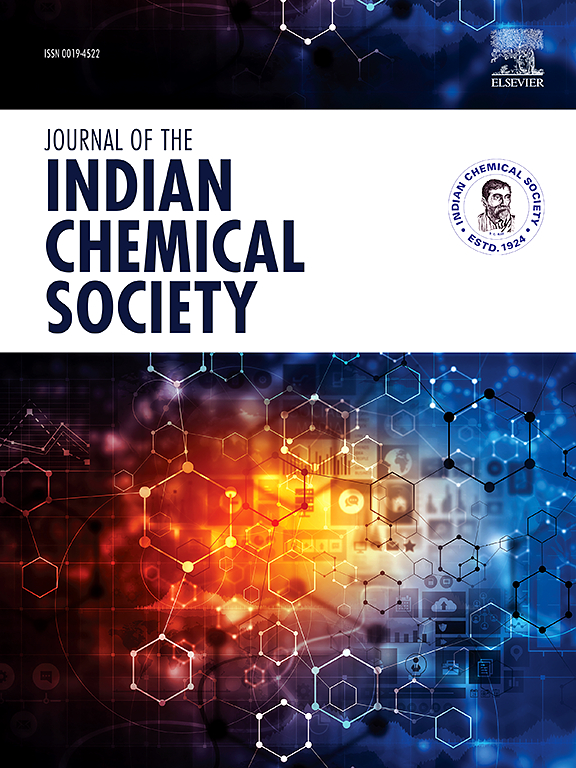利用 Mollugo oppositifolia L 水叶提取物以植物为媒介制造氧化铈纳米颗粒:抗菌、抗粘性和分子对接研究
IF 3.2
4区 化学
Q2 CHEMISTRY, MULTIDISCIPLINARY
引用次数: 0
摘要
利用生物工艺合成金属氧化物纳米粒子是纳米技术的一个前沿研究领域。本研究介绍了一种利用 Mollugo oppositifolia L 叶片的水提取物作为催化剂生产氧化铈纳米粒子(CeO2 NPs)的快速、环保方法。通过扫描电子显微镜(SEM)、X 射线衍射(XRD)、紫外可见光谱(UV-Vis)和傅立叶变换红外光谱(FT-IR)对合成的 CeO2 NPs 进行了综合表征。此外,还在体外评估了 CeO2 NPs 对各种细菌菌株的抗菌活性,结果表明,在 25 至 100 μg/mL 的浓度范围内,抑制区的大小与浓度有关。合成的 CeO2 NPs 的抗凝活性结果显示了显著的活性。进一步的分子对接研究还发现,与对照组链霉素相比,合成的 CeO2 NPs 在大肠杆菌拓扑异构酶 II DNA 回旋酶 B(PDB ID:1KZN)中具有更好的对接能力。本文章由计算机程序翻译,如有差异,请以英文原文为准。

Phyto-mediated fabrication of cerium oxide nanoparticles using Mollugo oppositifolia L aqueous leaf extract: Antibacterial, antitonicity, and molecular docking studies
The use of bio-processes for synthesizing metal oxide nanoparticles represents a forefront area of research in nanotechnology. This study introduces a rapid and eco-friendly approach for producing cerium oxide nanoparticles (CeO2 NPs) utilizing the aqueous extract of Mollugo oppositifolia L leaves as a catalyst. The synthesized CeO2 NPs underwent comprehensive characterization through scanning electron microscopy (SEM), X-ray diffraction (XRD), ultraviolet–visible spectroscopy (UV–Vis), and Fourier transform infrared spectroscopy (FT-IR). Furthermore, the antimicrobial activity of the CeO2 NPs was assessed in vitro against various bacterial strains, demonstrating a concentration-dependent inhibition zone when exposed to concentrations ranging from 25 to 100 μg/mL. Antitonicity activity results of the synthesized CeO2 NPs revealed significant activity. Further molecular docking studies also revealed that the synthesized CeO2 NPs have better docking ability compared to control Streptomycin in E. coli topoisomerase II DNA gyrase B (PDB ID:1KZN).
求助全文
通过发布文献求助,成功后即可免费获取论文全文。
去求助
来源期刊
CiteScore
3.50
自引率
7.70%
发文量
492
审稿时长
3-8 weeks
期刊介绍:
The Journal of the Indian Chemical Society publishes original, fundamental, theorical, experimental research work of highest quality in all areas of chemistry, biochemistry, medicinal chemistry, electrochemistry, agrochemistry, chemical engineering and technology, food chemistry, environmental chemistry, etc.

 求助内容:
求助内容: 应助结果提醒方式:
应助结果提醒方式:


